In one sense, the public meeting wasn’t unusual: Angry residents opposed to development plans in their neighborhood packed a meeting room and spoke with emotion against a developer’s proposal.
But several aspects of the meeting of the Woodfin Planning & Zoning Board on the evening of Monday, April 4 were different. For one thing, the turnout was the largest the Woodfin body had ever seen. About 80 people squeezed into a meeting room that normally holds only 50, and about 60 more stood in the hallway of Woodfin Town Hall outside the room. The size of the crowd, Planning & Zoning Board chair Ken Razza said, took him and fellow commissioners completely by surprise.
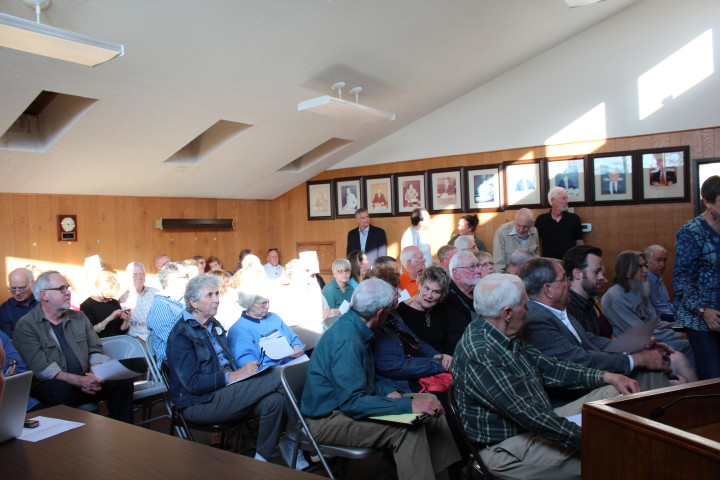
Another oddity was the composition of the crowd. Only two members of the public who spoke identified themselves as Woodfin residents. The vast majority of the attendees were residents of the city of Asheville who live in the Lakeview Park and Beaverdam neighborhoods. The Asheville citizens said that they, rather than Woodfin residents, would be the ones most affected by a proposed 196-unit residential development on the ridge line of Elk Mountain.
The 114-acre development property is owned by heirs and family members of the late Stewart Coleman, a local real estate developer. The parcel, which has been in the Coleman family for years, was annexed into the Town of Woodfin in 2010 at the owners’ request, according to Woodfin Town Administrator Jason Young. At that time, the land was zoned as Mountain Village, a classification that allows mixed-use development at a maximum density of 17 units per acre.
On a master plan originally submitted to the Woodfin P&Z board in March this year, the developer for the project is listed as Asheville Builders, LLC out of Lake Mary, Florida. The company was formed about a year ago. Local land planner Bob Grasso, who represented the developer at Monday night’s meeting, clarified that the property is under contract to the Florida company and the sale is contingent on receiving planning approval from the town.
Grasso kicked off the public meeting with a brief presentation of the project, which is known as Cornerstone. Based on the zoning, he said, a total of 1,938 units could be built on the site. Thus, the developer’s proposal represents just over ten percent of the density that could be allowed. Furthermore, zoning allows 70 percent impermeable surfaces, while 12.1 percent is proposed. Instead of the required 1.35 acres of open space, the developer is offering 101 acres. “Our goal,” Grasso said, “is to site and build our project where the land is developable.”
Grasso conceded that the site is steep, with an average grade of just under 50 percent. He and local geotechnical engineer Bernie Kessel walked the site, he continued, and identified colluvial (loose) soil, seeps and rock. Nevertheless, Kessel gave the green light, saying the project could be built. 23 acres of the site will be disturbed, with over 12 acres of that area being roads. The development will be gated, and emergency vehicles will access the property by way of a gated emergency road. Grasso said the condos are projected to sell for between $750,000 to $1.4 million per unit.
Because Woodin, unlike Buncombe County or the city of Asheville, has no ordinances related to construction on steep slopes, there are no limitations on the project related to the steepness of the site.
Resident and construction access, Grasso said, will be through Beaverbrook Road, Beaverbrook Court and Robinhood Road, all of which are owned and maintained by the city of Asheville. No Woodfin roads will connect to the development.
Residents express concerns
The list of concerns brought to P&Z by potentially affected residents was a long one: increased traffic on narrow roads, erosion, stormwater management, the danger of landslides, impact on wildlife and emergency access, among others. Many, including Tammy Leino of Beaverbrook Road, called for the board to delay a decision until more detailed information about the project’s impacts could be made available.
Along with her husband Ian, Leino is one of four property owners who also own a private stretch of Beaverbrook Road, which the developer proposes to use to provide access to 40 of the condo units. She and the other owners need time to consult with an attorney concerning the right-of-way, Leino said.
Cecil Beumer, one of Leino’s neighbors on Beaverbrook, said he was one of the original lot purchasers in Sherwood Heights in 1971. When he bought his lot from Stewart Coleman, Beumer said, he received a 60-year covenant that restricted development of the surrounding land to structures of 2 ½ stories or less. He showed the document to the P&Z board and continued, “I’m appalled that this is being attempted on these narrow roads with hairpin turns.”
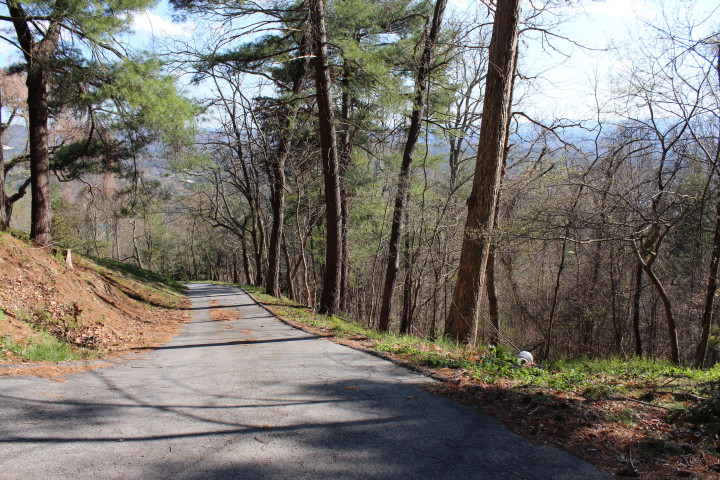
Near Leino and Beumer, Linda and Scott Wilkerson live at 10 Beaverbrook Court, a 4-acre property they bought from Tommy Coleman for $2.9 million in December 2014. The development plans, which show 24 units past the present end of Beaverbrook Court, were not disclosed to them when they purchased their property, they said. The couple is worried about the safety of their two children and the increase in traffic the project would bring. “These roads absolutely cannot sustain this amount of traffic,” said Linda Wilkerson. “When it rains we have rivers coming down. In the winter we slide all the way down the hill. It’s absurd to think even 15 to 20 additional cars could be accommodated, let alone 200 or more.”
Julia Fields, who lives off of Stratford Road in Lakeview Park, said much more detailed information needs to be scrutinized prior to a planning decision. She showed a map of relative hazard areas for landslide risk at the project site. Half of the project area, she said, is in a high or moderate relative hazard area for a landslide. She asked for additional soil testing and analysis of landslide risk, along with stamped drawings from a geotechnical engineer indicating that the project is viable from a technical standpoint.
Several residents decried the unfairness of the project’s impact on Asheville taxpayers through increased road maintenance, stormwater control and erosion costs. “The whole burden of this project falls on Asheville residents so that Woodfin can have a large tax base,” argued Frank Dosier of Fairway Road.
Lawrence Green of Pinewood Avenue cautioned the developer that Asheville residents will not wait passively in the face of potential landslides and other hazards. “If that happens, there will be litigation,” Green said. “That will send the cost through the roof. We need to tell those people in Florida they came to wrong place.”
Keith Pandres of Marlborough Road identified himself as a member of the Lakeview Dam Commission. He told the crowd that the dam is classified by oversight agencies as a high hazard structure. “It is critical that it be operated and maintained properly to avoid downstream life-threatening hazards,” Pandres said. He asked Grasso if the developer had studied the impact erosion related to the project on the lake; Grasso said they had not.
Builder Kevin Hackett of Robinhood Road asked for assurance that, if approved, the developer would not ask to build additional units in the future. “We are super-mindful of that,” responded Razza, indicating that the board is committed to ensuring that developers follow through on the commitments made in their plans.
Another citizen noted that it seemed a conscious decision had been made not to engage the community in discussions about the project. “The [Asheville] Mayor’s office was not even aware of it; they were notified by residents,” he said.
Grasso confirmed that “a decision was made to not attempt to reach out to community.” Nonetheless, he continued, he is confident that the project will “tread lightly” on the steep land and will be an asset to the community.
As the public hearing was winding down, Ian Leino presented the board with over 500 signatures gathered in response to a Change.org petition opposing the project. “As you’ve been hearing, this project could potentially affect people for miles around. For that reason we ask that you delay a decision and that many more people be notified in advance of future meetings.”
After the majority of attendees had left the room at the conclusion of the public hearing, Grasso asked the commissioners for input on what he should tell his client. He expressed concern at the potential cost of the additional studies that residents had requested. Young said he would provide Grasso with a list.
The commissioners voted 7-0 to continue their decision to a future meeting. After dispensing with the rest of its business, the board adjourned at about 9 p.m.
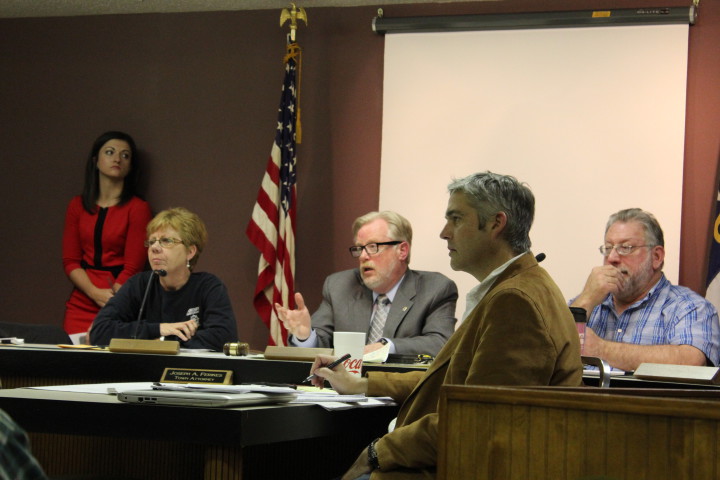
Commission member Dean Hittleman remarked that, contrary to what attendees seemed to believe, there was no “railroading” intended by the board. Another commissioner, Sherry Campbell, said citizens need to understand that the board is bound by law to approve projects that meet relevant requirements. Campbell also said she found it “rude to us that people assumed this was a foregone conclusion.”
“Many of those people wouldn’t have the houses they live in now if steep slope regulations had been in place when those houses were built,” Campbell pointed out. “So it seems like they want to prevent other people from having the same opportunity to live in these areas that they have themselves.”
For additional information, see our previous story on the proposed project: Updated: 196-unit development proposed for Elk Mountain ridgeline.

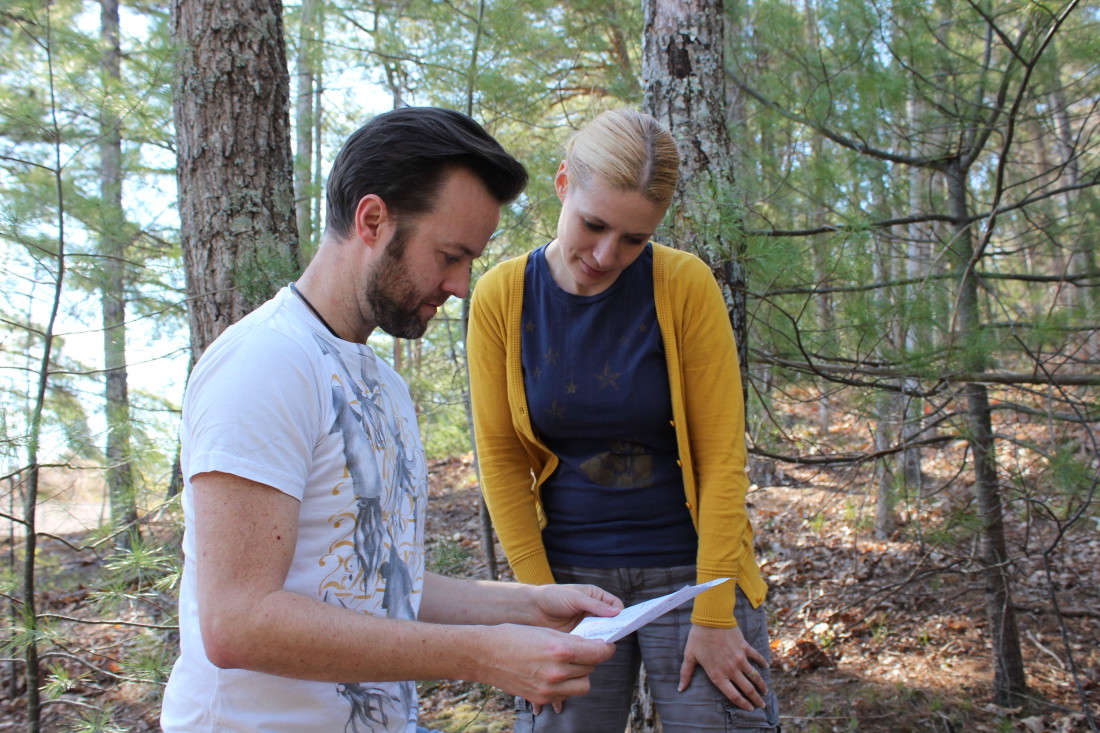

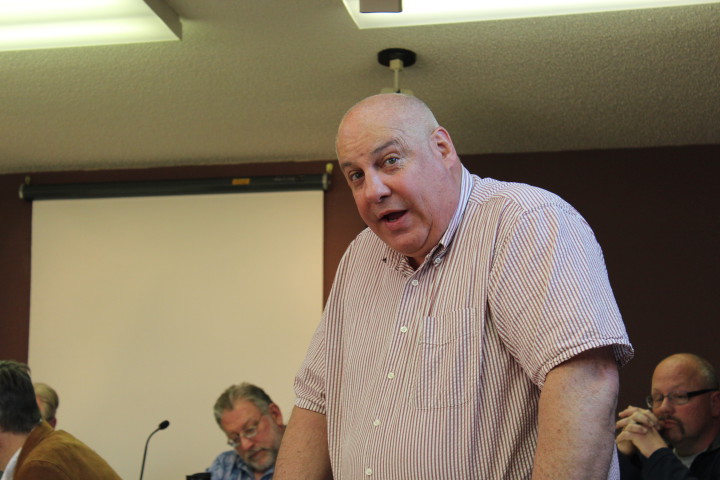

IT ALL BOILS DOWN TO GREED. GREED AND THE FACT YOU CANNOT TRUST WHAT THE WOODFIN TOWN LEADERS SAY.Because Woodin, unlike Buncombe County or the city of Asheville, has no ordinances related to construction on steep slopes, there are no limitations on the project related to the steepness of the site. WHAT MAKES WOODFIN SO SPECIAL THAT THEY DONT HAVE THESE SAME LIMITATIONS AS THE REST OF BUNCOMBE COUNTY…..WOODFIN TOWN COUNCILS DECISION OR ? AGAIN GREED IS THE RIGHT ANSWER.
where’s the workforce and affordable housing in this project ? why such outrageous prices starting at $750K ? this creates UNaffordable neighborhoods . Wake up Woodfin!
Anyone who has been up Beaverbrook Road to the proposed development knows that this road is NOT -by any stretch of the imagination- made, or able to handle, 200 cars per day….. much less 20 per day. If you haven’t been up there (which I assume 99% of Mountain Xpress readers haven’t) just take a second look at the photo of the Beaverbrook Road included with this article….. pretty self explanatory…. no matter WHAT the “Land Planner” for the proposed development -Bob Grasso- says to the contrary.